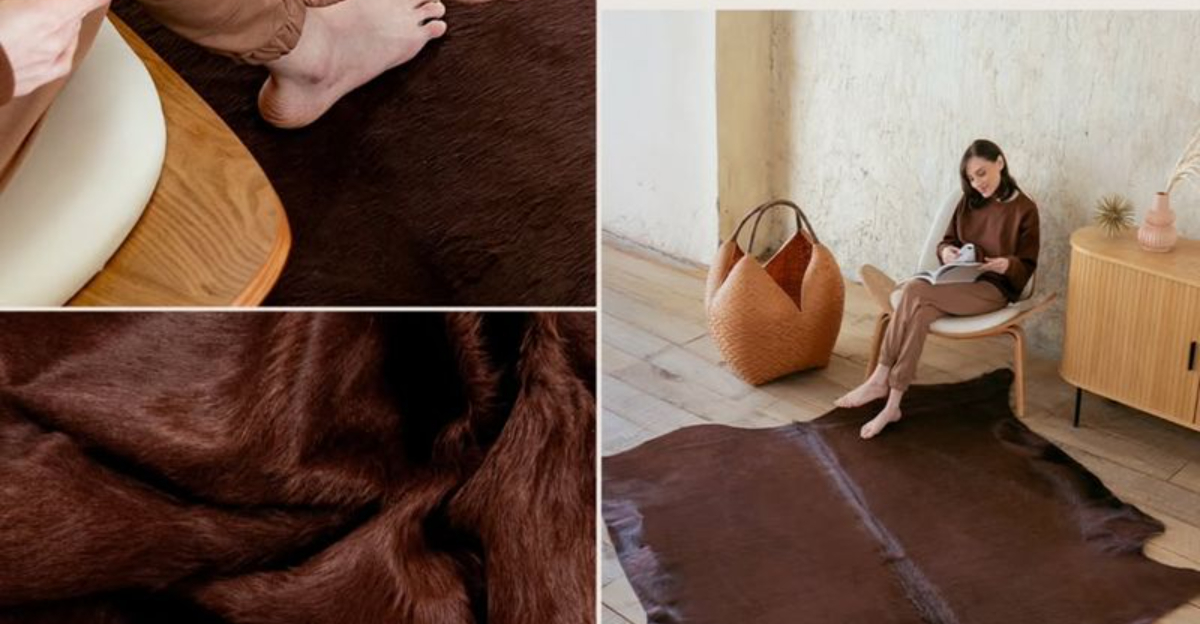We all have that one trend in our home that seemed like a good idea at the time… and now, not so much. This article dives into 30 of the most bizarre and outlandish home decor trends we once embraced—each with a dash of nostalgia, awkward charm, and a bit of humor. From shag carpets to neon lights, prepare for a quirky walk down memory lane.
1. Shag Carpets
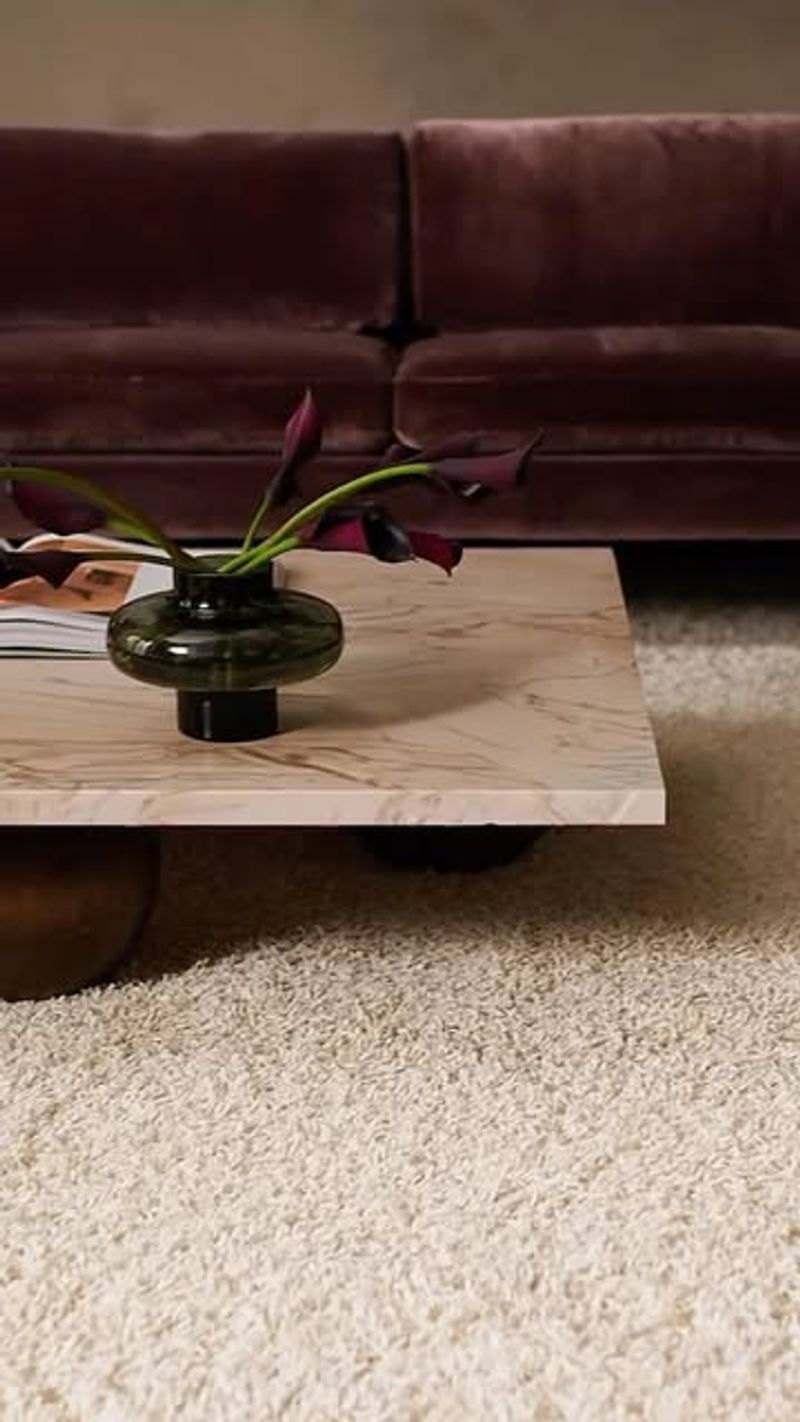
Remember the 70s? It was all about shag carpets—luxurious to touch but a nightmare to clean. People loved sinking their toes into the fluffy fibers, but they quickly became a dirt magnet. The vibrant colors, like orange and avocado green, were eye-catching but ultimately impractical. While they added a cozy vibe, removing the dust from those long strands was an epic challenge. Today, they mainly live in our memories.
2. Velvet Upholstery
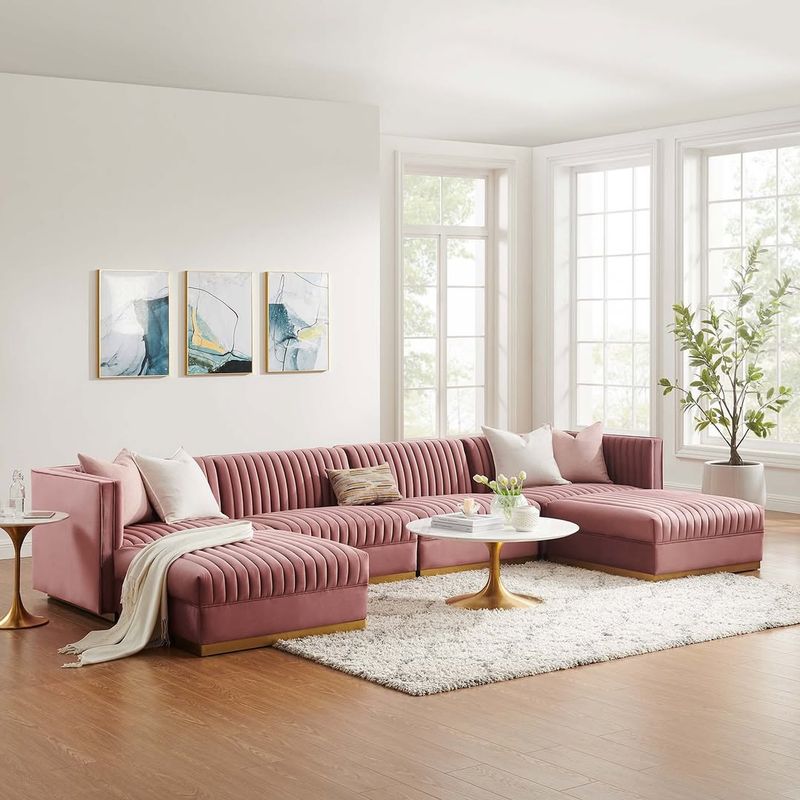
Velvet upholstery was the epitome of luxury in the 80s, with rich textures that screamed opulence. The deep, plush fabric offered a comfy sit but attracted every possible stain. While velvet furniture looked elegant, maintaining its pristine state was far from easy. From wine spills to pet hairs, it absorbed everything. The allure faded with time, and many traded elegance for practicality.
3. Faux Animal Hides
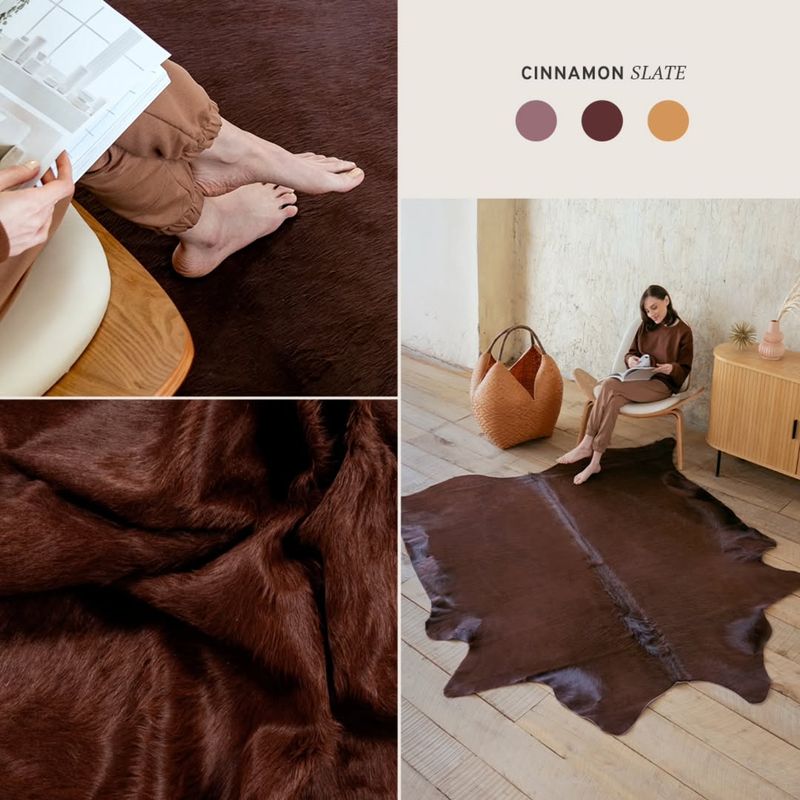
Faux animal hides became popular as ethical alternatives to real skins, offering stylish yet animal-friendly decor. They were draped over chairs or used as rugs, adding a touch of wilderness to urban homes.
However, cleaning them was no walk in the park, and they often seemed out of place. Although they aimed to mimic nature, they sometimes felt more like a fashion faux pas.
4. Neon Lights
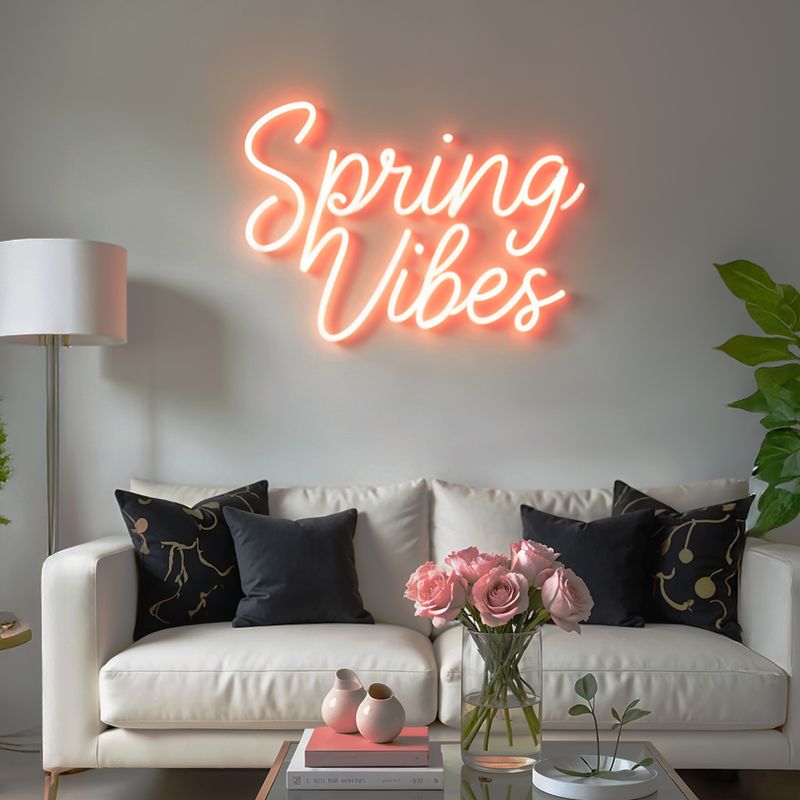
In the 80s and early 90s, neon lights were synonymous with trendiness. Glowing signs and vibrant colors brought a nightclub vibe into homes. Words like “dream” or “love” were popular choices, illuminating walls with a whimsical glow.
While they added flair, their brightness grew overbearing. Eventually, the neon glow dimmed, leaving behind memories of brightly lit nostalgia.
5. Brass Everything

Once upon a time, brass fixtures exuded sophistication. From lamps to door handles, everything had a golden sheen. But the charm faded as brass tarnished and trends shifted. It went from chic to outdated, cluttering thrift stores everywhere.
Though it aimed for elegance, brass often looked too flashy. Over time, the allure dimmed, and homes transitioned to subtler metallics.
6. Tuscan Kitchens
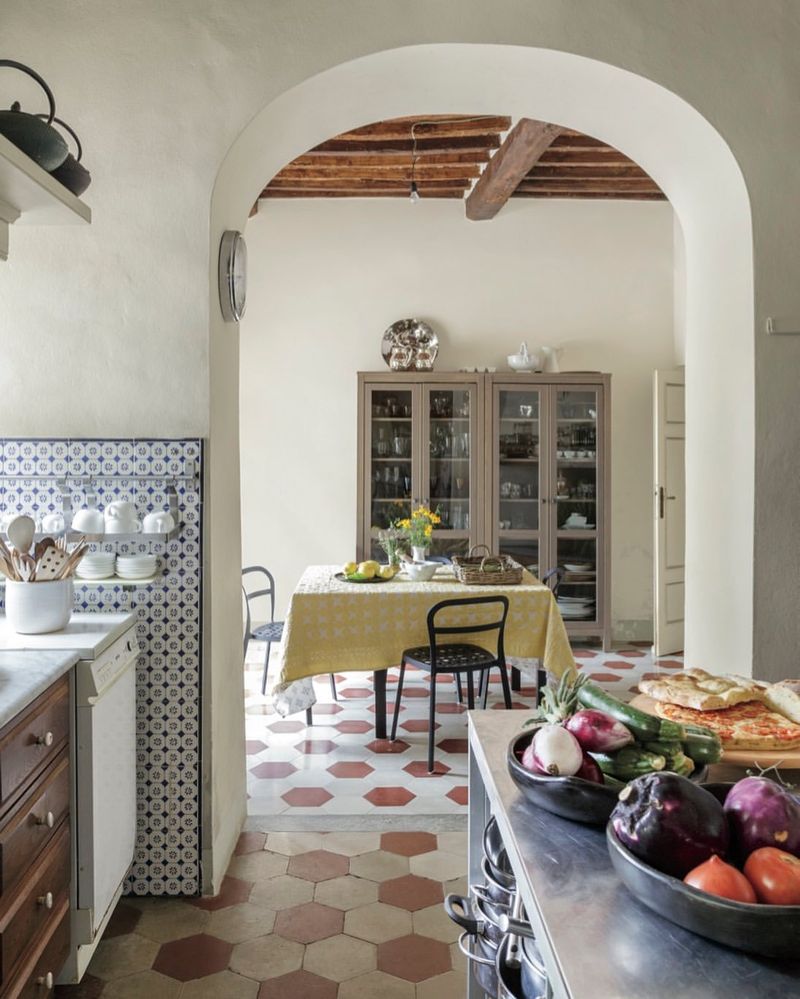
Tuscan kitchens were all the rage, with faux stone walls and wrought iron chandeliers bringing Mediterranean charm. Earthy tones and rustic vibes offered a warm ambiance. But the heavy decor and dark colors soon overwhelmed small spaces.
While initially inviting, maintaining the elaborate design became cumbersome. The trend lingered, yet many have since opted for brighter, more minimalist kitchens.
7. Wallpaper Borders
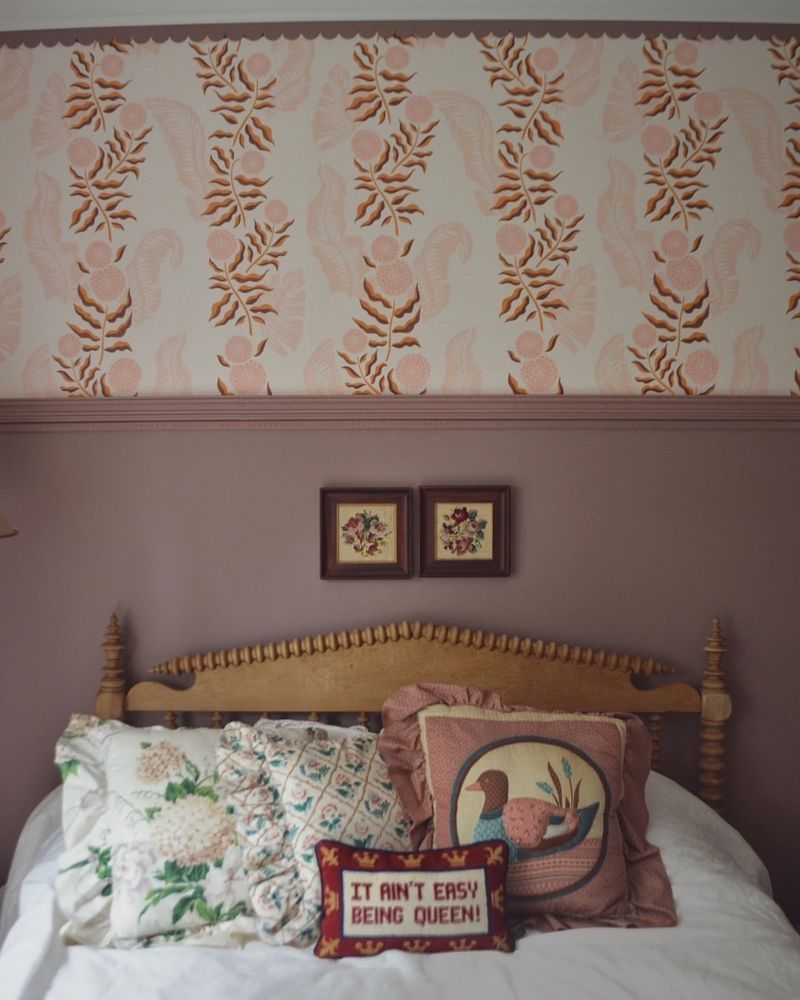
Wallpaper borders once defined style, with ivy leaves or ducks adorning walls. They added charm but soon became overbearing, with busy patterns clashing with decor. Borders often seemed like an afterthought, and removing them was tedious.
Despite their brief popularity, most were left questioning their purpose. Eventually, plain painted walls regained their place in home design.
8. Popcorn Ceilings
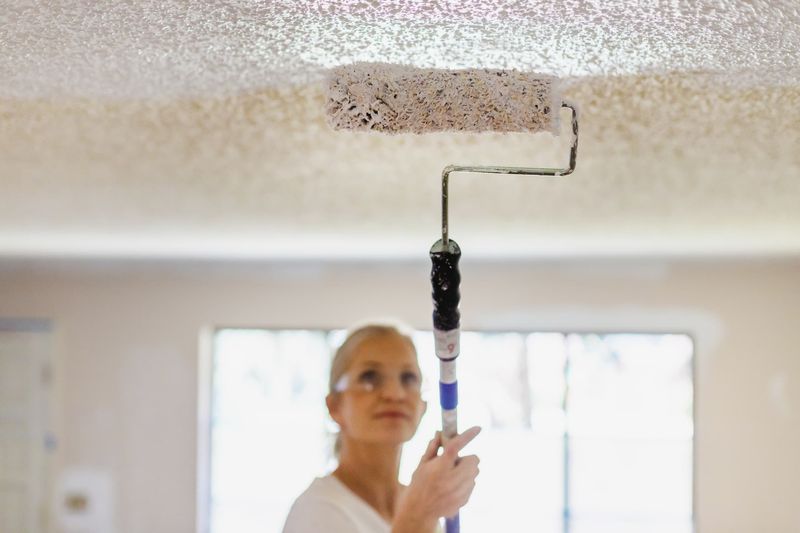
Popcorn ceilings were a commonplace sight, offering texture but also trapping dust. Initially admired for their acoustic benefits, their appearance became a dated eyesore.
Cleaning them proved impossible, and the bumps collected cobwebs effortlessly. While they once added interest, many homeowners now opt for flat, smooth ceilings. The popcorn craze fizzled out as people sought cleaner, modern aesthetics.
9. Collectible Plates
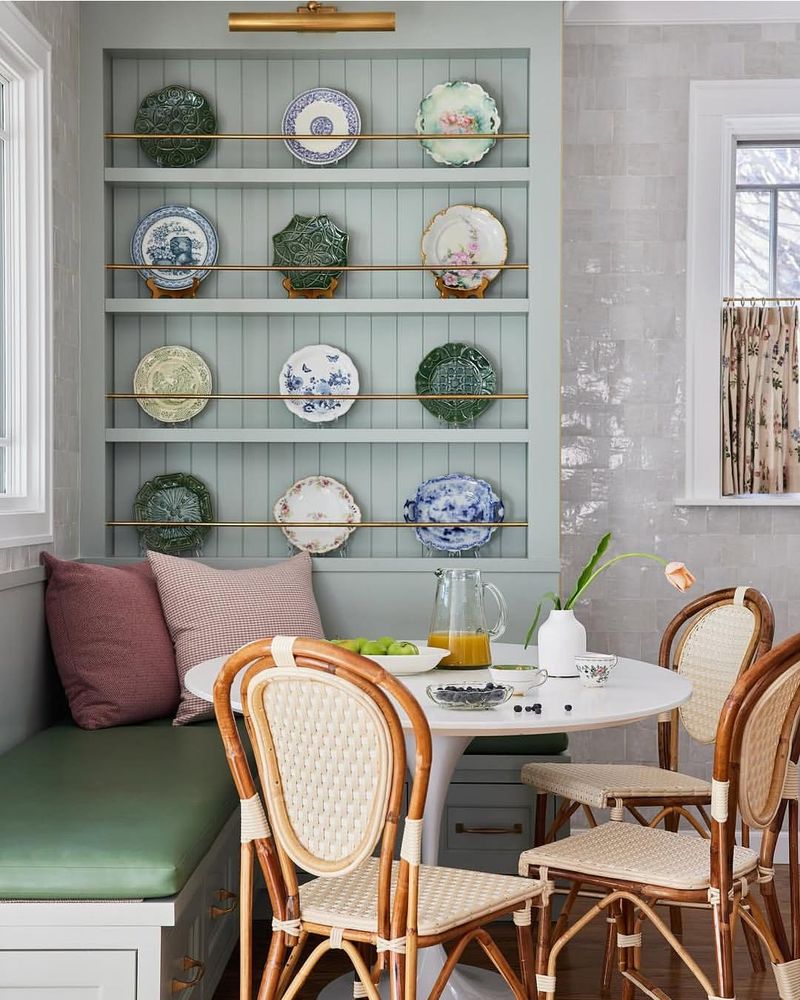
Decorative plates were once a collector’s dream, with designs ranging from kittens to landscapes. Hanging them on walls added a touch of charm, showcasing personal taste. However, as trends changed, they felt cluttered and old-fashioned. Once prized for their uniqueness, they now linger in attics as relics of a bygone era. Their display has mostly been replaced by minimalist art pieces.
10. Big Floral Prints
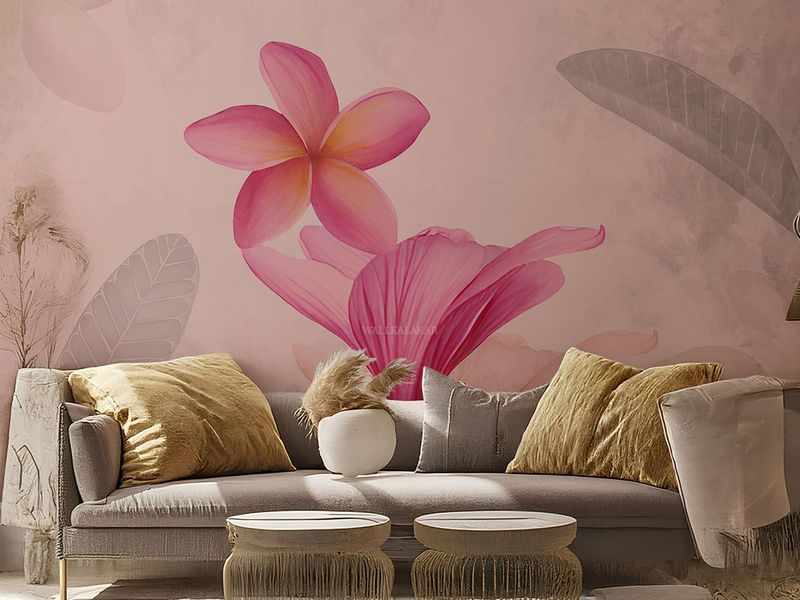
The 70s loved big floral prints, splashed across everything from curtains to couches. These loud patterns were both captivating and overwhelming, often clashing with other decor. While they added warmth, their gaudy nature quickly wore out their welcome. As minimalism rose, these prints faded into fashion history. Today, they’re a reminder of a time when bold was beautiful.
11. Bamboo Furniture

Bamboo furniture surged in popularity, being lightweight and eco-friendly. Chairs, tables, and shelves embodied natural beauty, fitting perfectly into tropical themes. Yet, its durability often came into question, as it wore down easily.
While it brought a touch of nature indoors, many found it less practical over time. Eventually, sturdier materials overthrew bamboo, though its charm endures.
12. Sunken Living Rooms
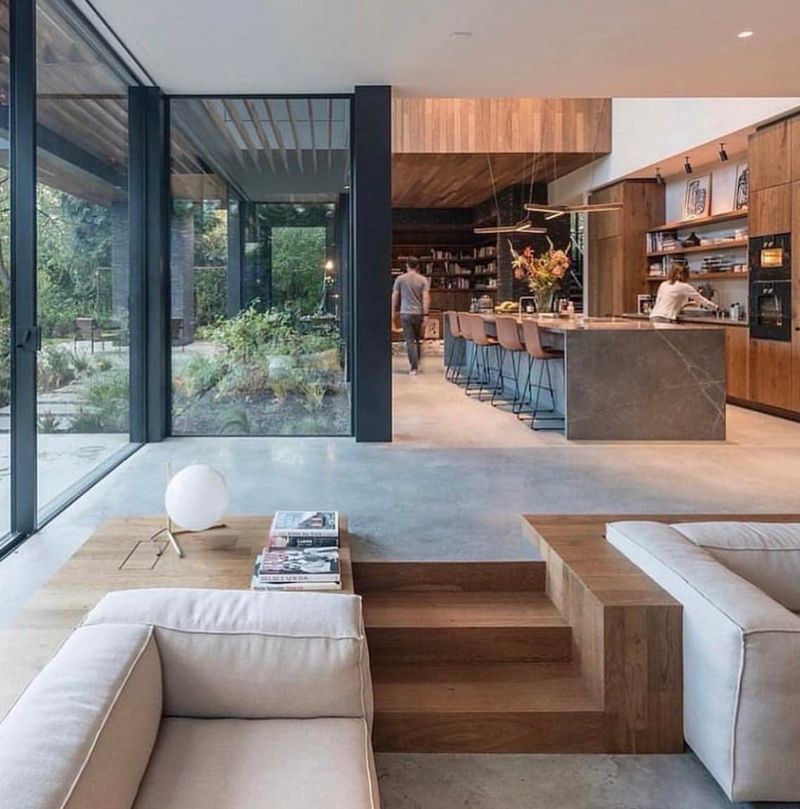
Sunken living rooms once exuded modern luxury, creating intimate spaces within open areas. These lower-level pits defined conversation zones with unique appeal. However, they posed tripping hazards and limited furniture layouts.
Despite their stylish origins, practicality issues led to their decline. While they offered architectural interest, many have since filled in the dips, opting for flat, seamless floors.
13. Mirror Walls
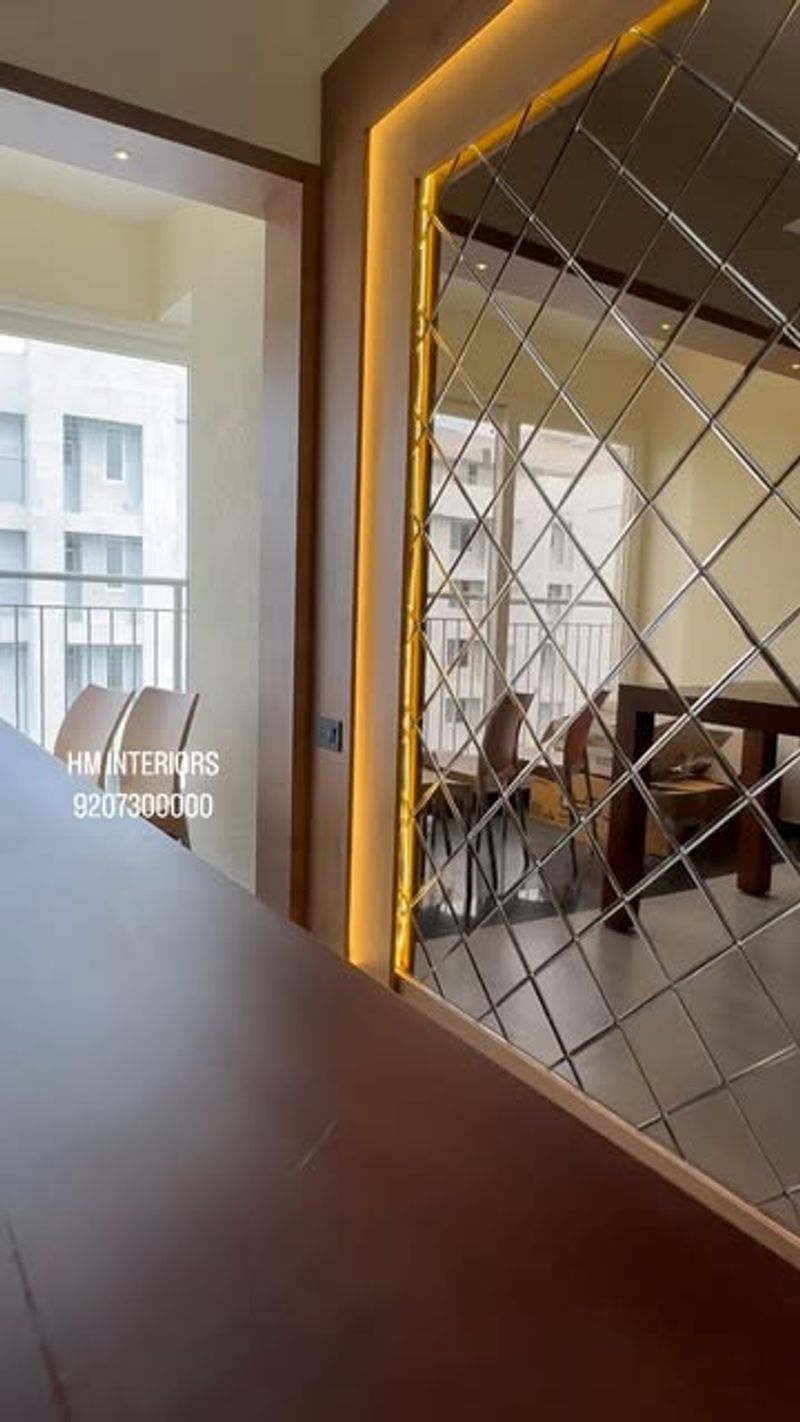
Mirror walls expanded spaces with reflections, creating the illusion of more room. Popular in the 70s and 80s, they added a disco-like vibe, turning homes into reflective wonderlands. However, constant upkeep and cleaning became a chore. While they brightened rooms, the overwhelming reflections led to sensory overload. In time, people preferred simpler, less intrusive design choices.
14. Clawfoot Tubs in Kitchens
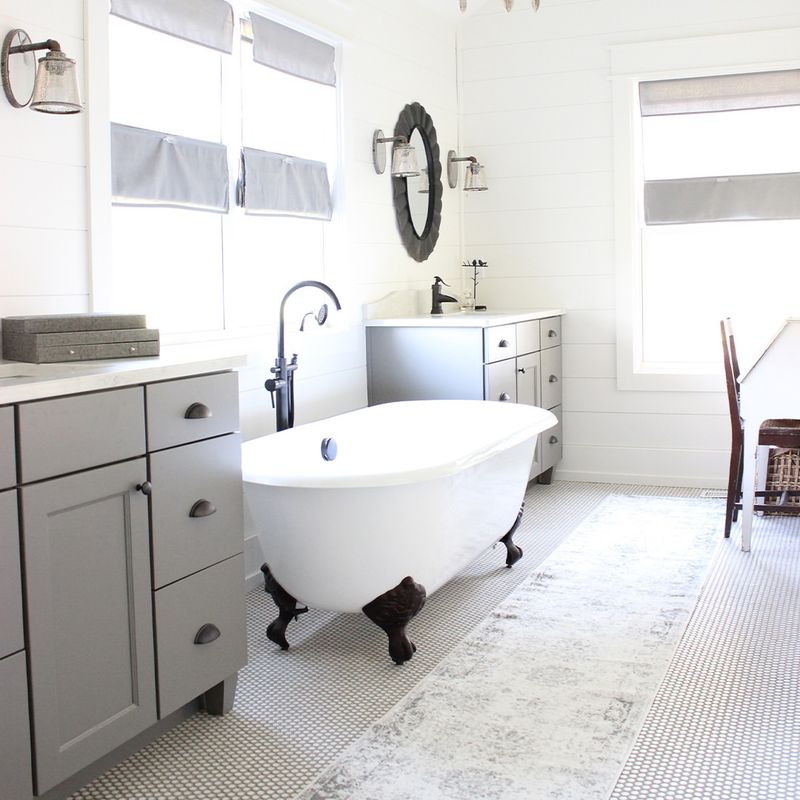
For a brief moment, clawfoot tubs found their way into kitchens—a quirky trend indeed. While they added vintage charm, practicality took a backseat. Who thought bathing and cooking belonged together? The idea quickly fizzled as common sense prevailed.
Kitchens returned to standard layouts, yet the memory of this odd pairing lingers, reminding us of design’s whimsical side.
15. Kitchen Islands with No Storage
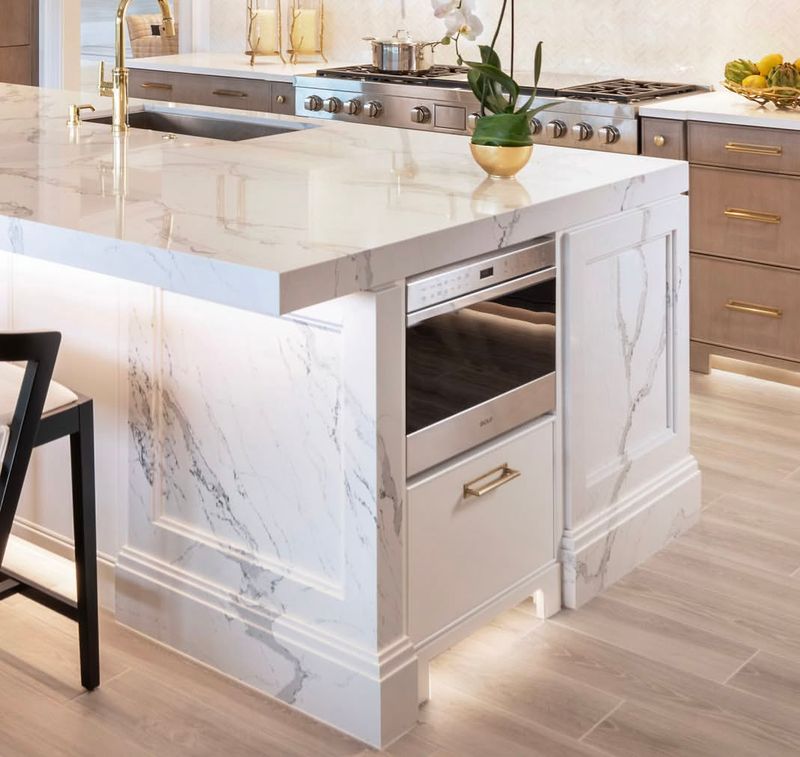
Kitchen islands became a must-have, but some lacked storage, serving only as decorative tables. These islands made a statement but offered little functionality, defying their purpose. Homeowners sought style over substance, missing out on valuable space.
Eventually, practicality won, and islands now boast cabinets and shelves. While they once symbolized chic design, their evolution highlights function over form.
16. Waterbeds
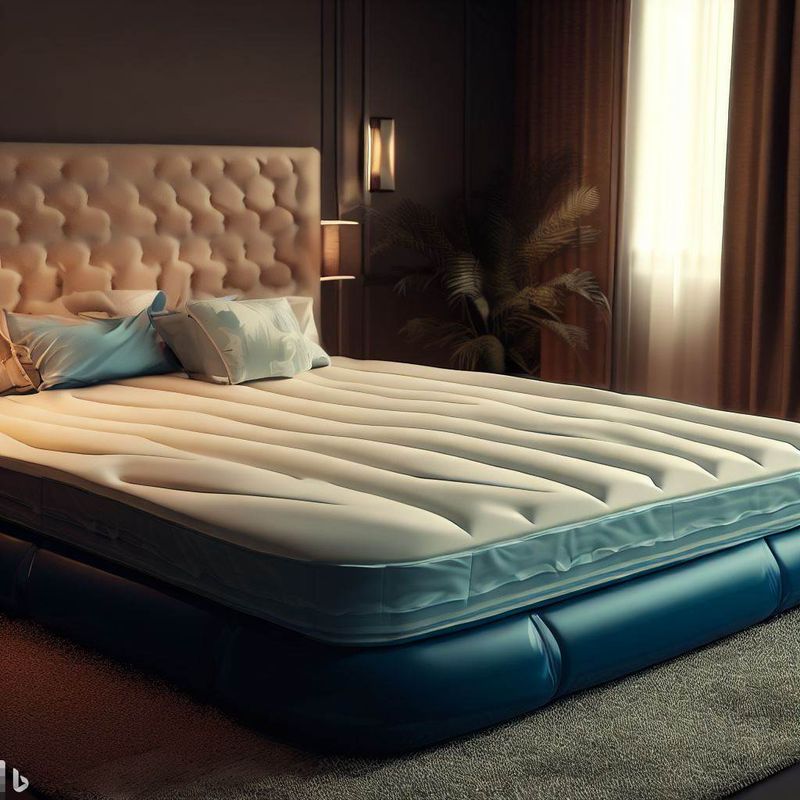
Waterbeds represented ultimate relaxation, with their gentle motion mimicking ocean waves. They became symbols of coolness and innovation. However, leaks and maintenance issues soon surfaced, overshadowing their comfort.
The novelty wore off as traditional mattresses regained popularity. Despite their unique feel, waterbeds wobbled out of favor, leaving behind a splash in bedding history.
17. Painted Furniture
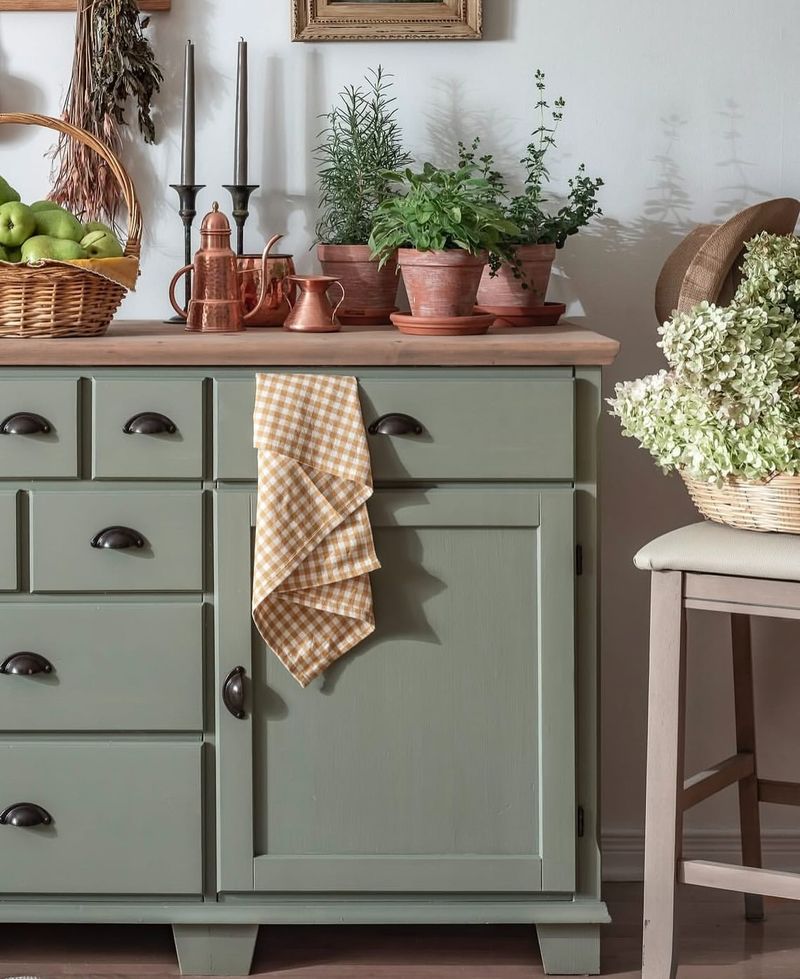
Painted furniture allowed self-expression through colors, with pastels and bold hues dominating. Dressers, chairs, and tables became art pieces, reflecting individuality. Yet, mismatched tones often clashed, creating visual chaos.
While they offered creativity, their trendiness faded as neutral palettes returned. Today, painted pieces add charm sparingly, serving as accents rather than focal points.
18. Matching Everything
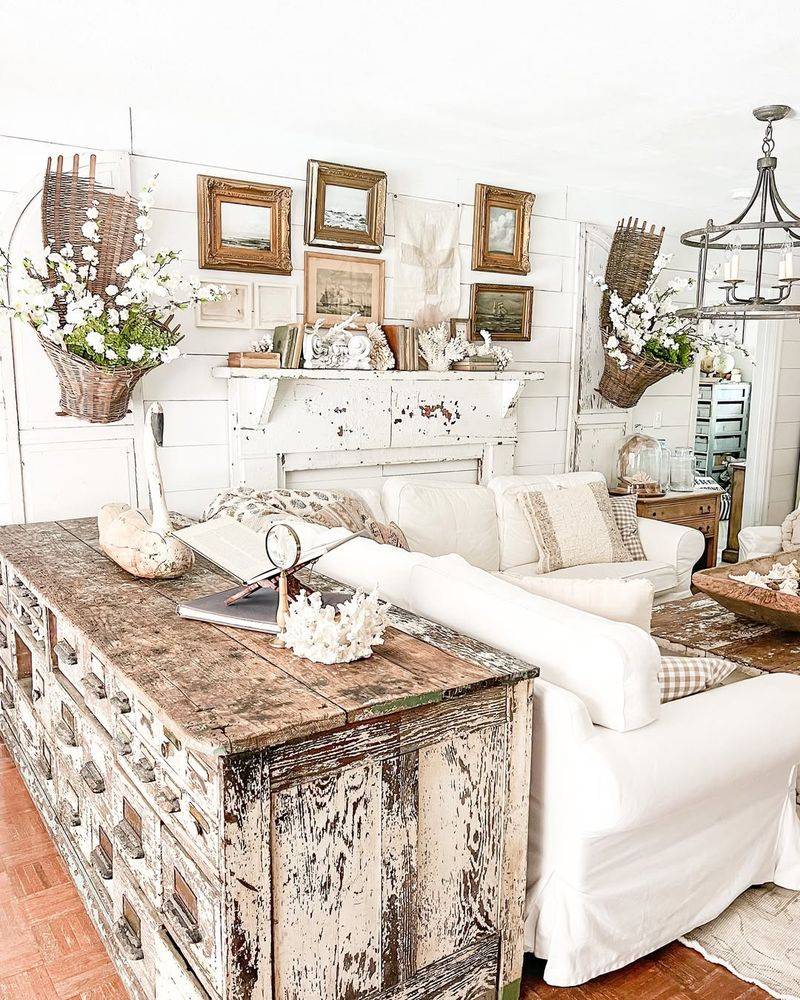
There was a time when matching was key—curtains, couches, and even lamps harmonized in pattern and color. This uniformity aimed for elegance but often led to monotony. Rooms lost character, trapped in a cycle of sameness. Although it sought coordination, individuality suffered. Over time, eclectic and curated styles broke free from matching constraints, embracing diversity over uniformity.
19. Faux Finishes
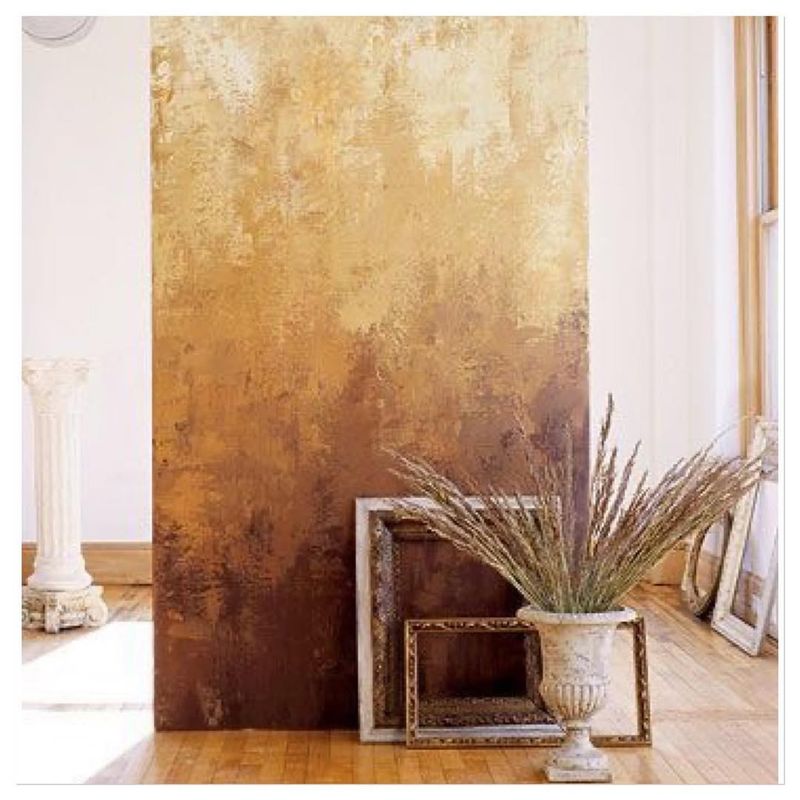
Faux finishes mimicked real textures, like marble or wood, offering affordable elegance. Walls transformed into imitation masterpieces, though authenticity was questionable. While they brought variety, discerning eyes noticed the facade.
The trend’s allure faded as genuine materials regained favor. Today, faux finishes remain as an occasional accent, blending with authentic decor to strike a balance.
20. Swooping Draperies
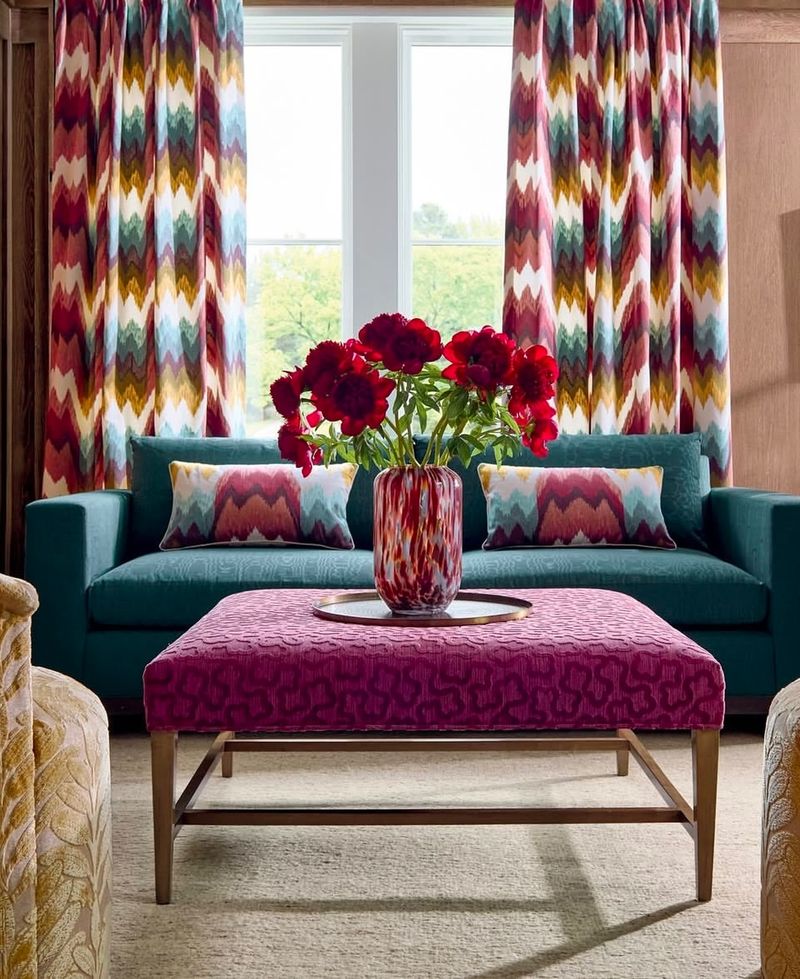
Swooping draperies cascaded luxuriously, creating drama and elegance. They framed windows with theatrical flair, yet cleaning was an ordeal. Dust gathered in fabric folds, requiring constant attention. Though visually stunning, their upkeep overwhelmed homeowners. Simpler designs replaced these grand gestures, offering beauty without the hassle. The curtains closed on this trend, leaving behind memories of grandeur.
21. Hanging Glass Light Fixtures
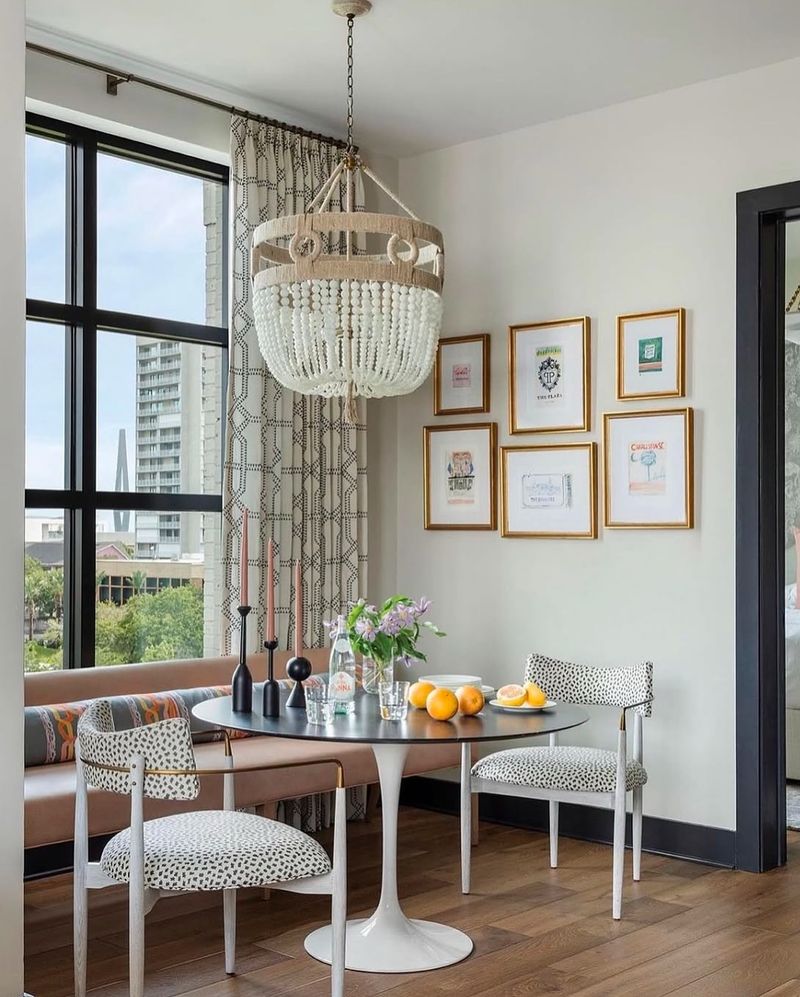
Hanging glass fixtures adorned rooms with elegance, casting warm, shimmering glows. Yet, their fragility posed challenges, and replacements were costly.
While they added sophistication, the risk of breakage was high. Over time, more durable lighting options emerged, offering style and practicality. These fixtures, though once popular, now serve as vintage finds, cherished for their bygone charm.
22. Painted Ceilings
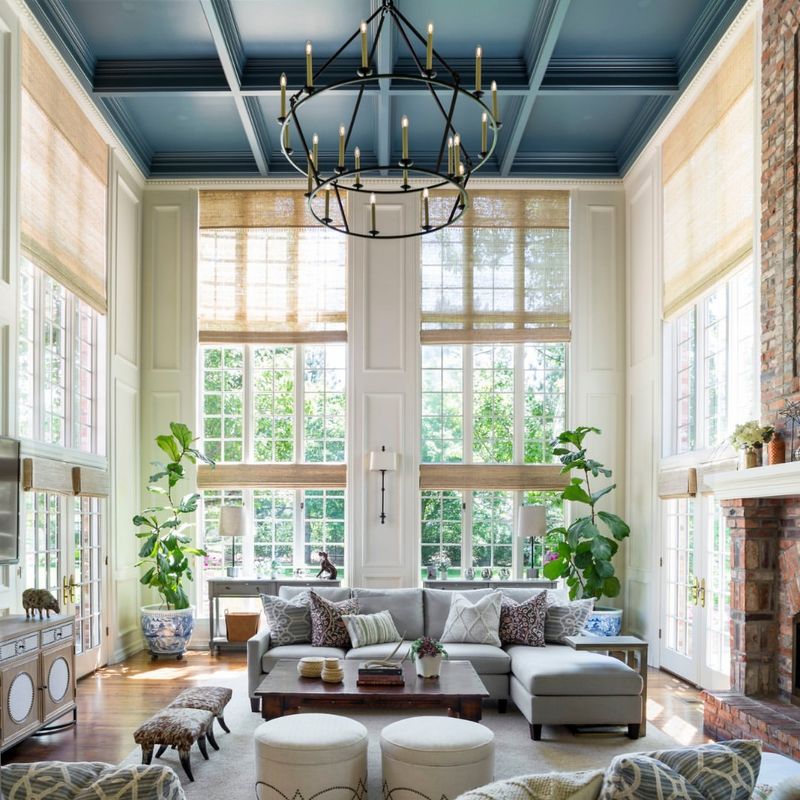
Bold ceiling colors made statements, with hues contrasting walls for dramatic effects. While adding interest, they often overwhelmed spaces, drawing focus upwards. Maintaining this look required commitment, as repainting was daunting.
Although ceilings offered a canvas for creativity, the trend waned in favor of subtler tones. This colorful history remains a testament to daring design choices.
23. Overly Themed Rooms

Themed rooms took creativity to extremes, from pirate adventures to jungle escapades. While fun, these designs often became impractical and overbearing. Maintaining a theme required constant updates, as interests evolved.
Though they offered imagination escapes, many returned to versatile decor. Themed spaces became nostalgic memories, cherished for their whimsical nature but often replaced by adaptable designs.
24. Stone Fireplaces Everywhere

Stone fireplaces added grandeur, becoming focal points in living rooms. They exuded warmth, but their size often overwhelmed spaces. While they provided rustic charm, maintaining them proved labor-intensive. As homes modernized, sleek designs replaced these massive structures. The stone era left a lasting impression, yet many now seek smaller, more efficient fireplaces to fit contemporary lifestyles.
25. Macramé Wall Hangings
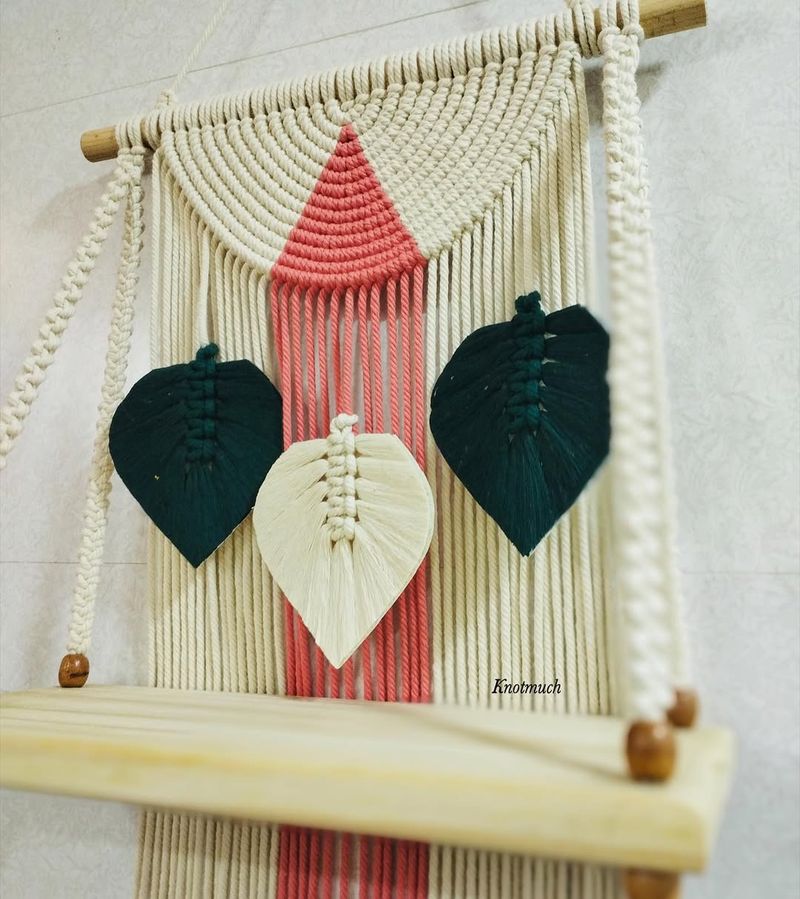
Macramé hangings adorned walls with intricate knots, embracing bohemian vibes. These tactile artworks added texture but required dusting diligence. While they offered nostalgic charm, their delicacy limited placement options. As minimalism rose, macramé art became specialized decor, cherished for its craftsmanship. Its presence today blends boho with modern aesthetics, a nod to its enduring appeal.
26. Plastic Furniture Covers
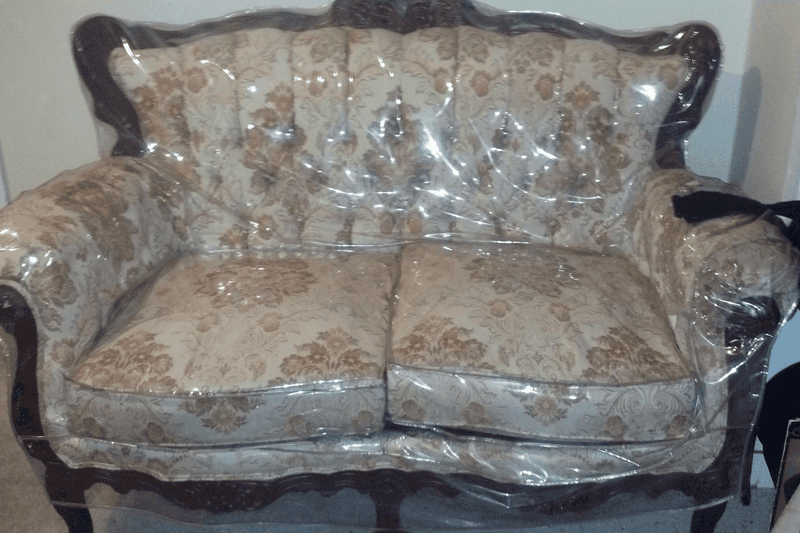
Plastic covers shielded furniture from spills, preserving pristine conditions. Yet, they hindered comfort, with creaky sounds and sticky summers. While practicality was the goal, aesthetics suffered.
Over time, breathable fabrics replaced these barriers, offering protection with style. Though once a staple, plastic slipcovers now evoke nostalgic memories, humorously recalling a time of cautious preservation.
27. Inflatable Furniture
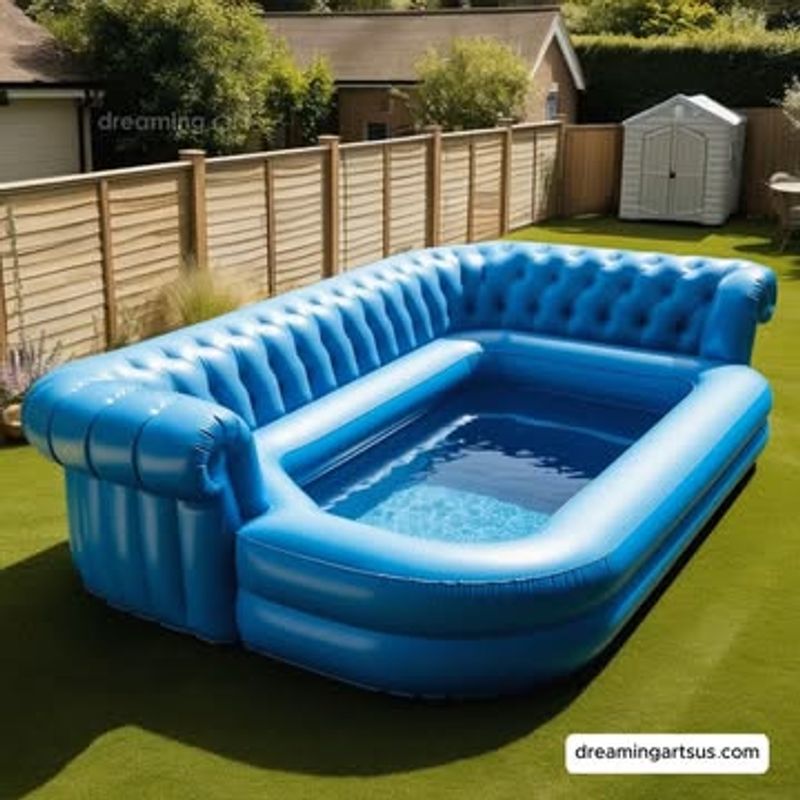
Inflatable furniture was a hallmark of the 1970s, bringing a playful and eccentric flair to home interiors. These vibrant pieces, often crafted in bold colors and patterns, offered a unique blend of comfort and kitsch.
While they were easy to clean and incredibly lightweight, their durability left much to be desired. Many homeowners found themselves constantly patching up leaks. Despite this, the trend persisted for a time, embodying the era’s experimental spirit.
Today, the inflatable furniture of the ’70s is viewed with a sense of nostalgic amusement. It’s a reminder of a time when bold experimentation defined home decor, and there were no limits to creativity.
28. Indoor Waterfalls
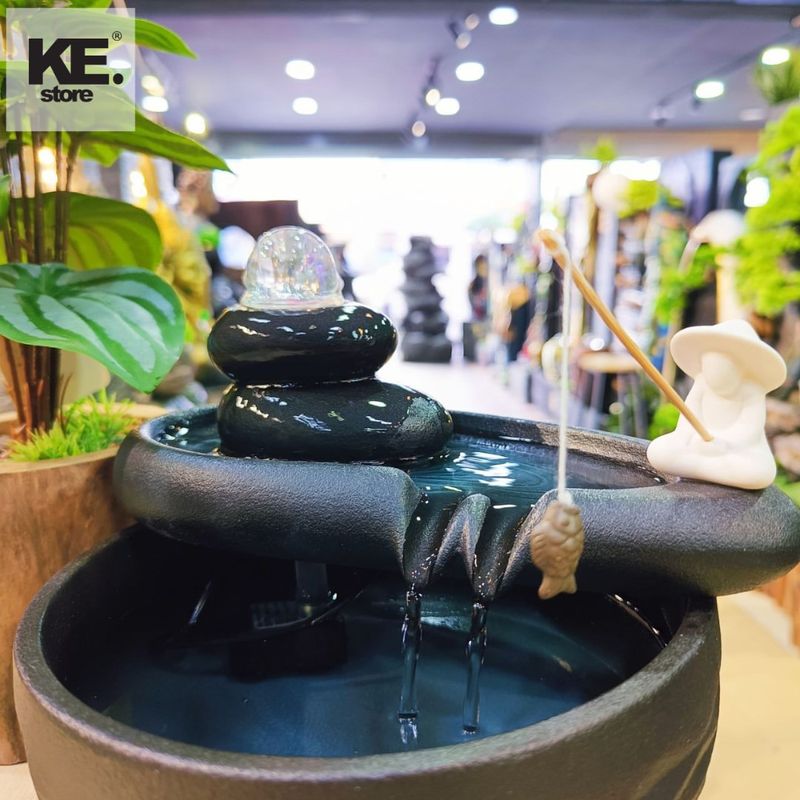
Indoor waterfalls brought nature indoors, creating serene atmospheres with trickling water. Yet, they added humidity and required upkeep, soon losing their novelty. While offering tranquility, their impracticality surfaced, as maintenance overshadowed aesthetics.
As design preferences evolved, simpler water features emerged, balancing beauty with function. The waterfall trend left a splash, now cherished as a unique decorative chapter.
29. Mood Lighting Everywhere
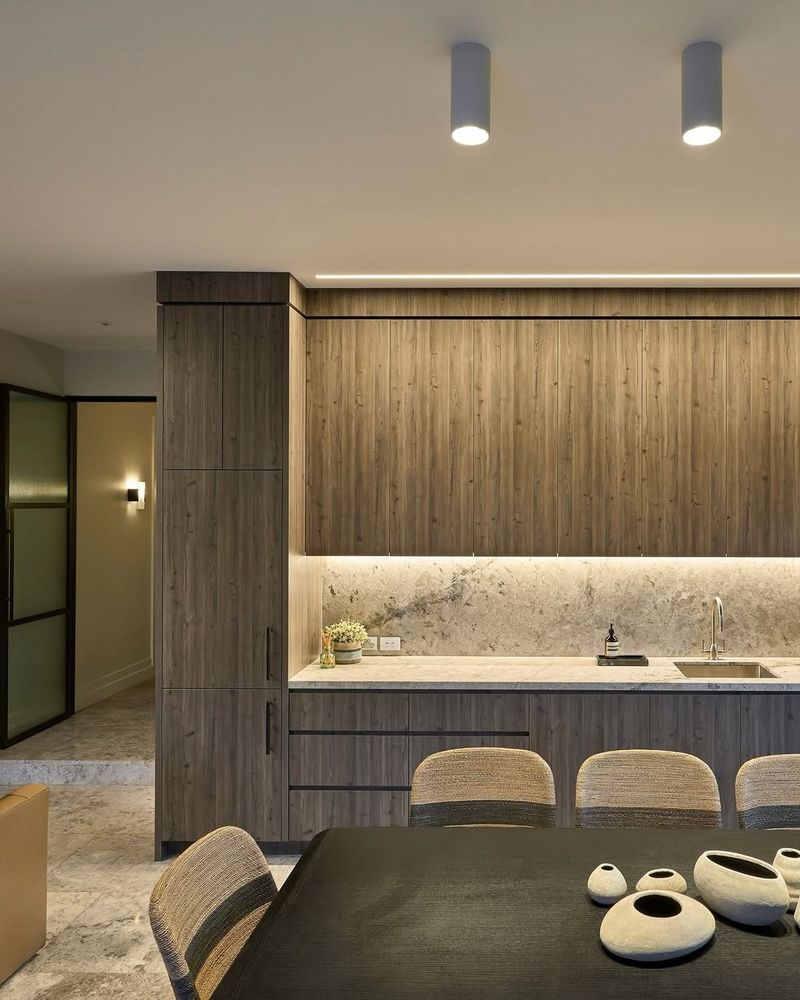
Mood lighting set the ambiance, with colored bulbs and dimmers creating cozy environments. While romantic, too much mood lighting left rooms dim and impractical for daily tasks.
Over time, balanced lighting integrated decorative and functional needs, offering versatility. The allure of mood lighting persists, though more strategically used, blending ambiance with utility for modern living.
30. Overdecorating with Knick-Knacks

Knick-knacks covered every surface, reflecting personal stories but overwhelming spaces. While they added character, clutter quickly ensued, making cleaning challenging.
As minimalism gained traction, decluttering became a movement, leaving knick-knacks behind. Today, curated collections replace chaotic displays, showcasing meaningful items. The era of overdecorating serves as a reminder of balance, finding beauty in simplicity.

